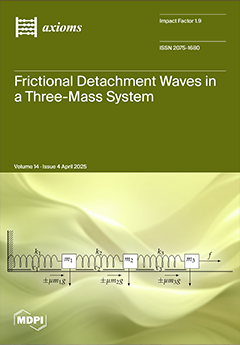The Banach Gelfand Triple
consists of the Feichtinger algebra
as a space of test functions, the dual space
,
[...] Read more.
The Banach Gelfand Triple
consists of the Feichtinger algebra
as a space of test functions, the dual space
, known as the space of mild distributions, and the intermediate Hilbert space
. This Gelfand Triple is very useful for the description of mathematical problems in the area of time-frequency analysis, but also for classical Fourier analysis and engineering applications. Because the involved spaces are Banach spaces, we speak of a
Banach Gelfand Triple, in contrast to the widespread concept of
rigged Hilbert spaces, which usually involve nuclear Frechet spaces. Still, both concepts serve very similar purposes. Based on the manifold properties of
, it has found applications in the derivation of mathematical statements related to Gabor Analysis but also in providing an alternative and more lucid description of classical results, such as the Shannon sampling theory, with a potential to renew the way how Fourier and time-frequency analysis, but also signal processing courses for engineers (or physicists and mathematicians) could be taught in the future. In the present study, we will demonstrate that one could choose a relatively large variety of similar Banach Gelfand Triples, even if one wants to include key properties such as Fourier invariance (an extended version of Plancherel’s Theorem). Some of them appeared naturally in the literature. It turns out, that
is the smallest member of this family. Consequently
is the largest dual space among all these spaces, which may be one of the reasons for its universal usefulness. This article provides a study of the basic properties following from a short list of relatively simple assumptions and gives a list of non-trivial examples satisfying these basic axioms.
Full article




